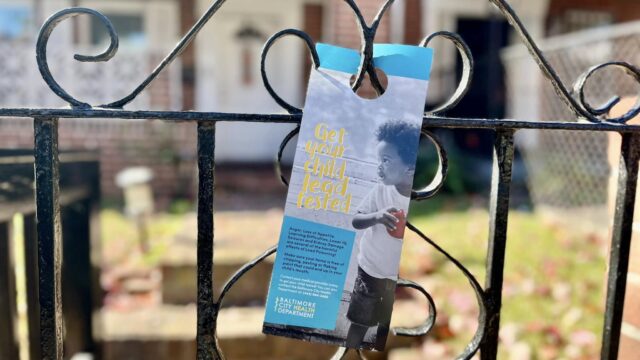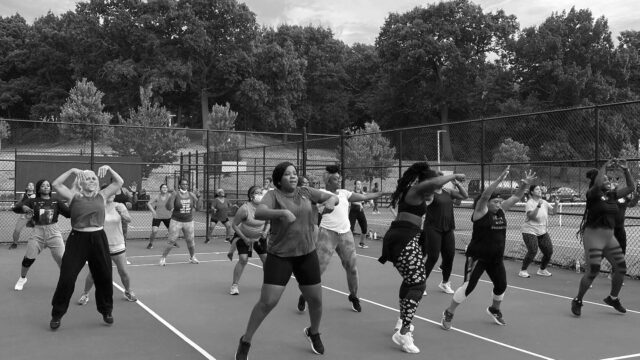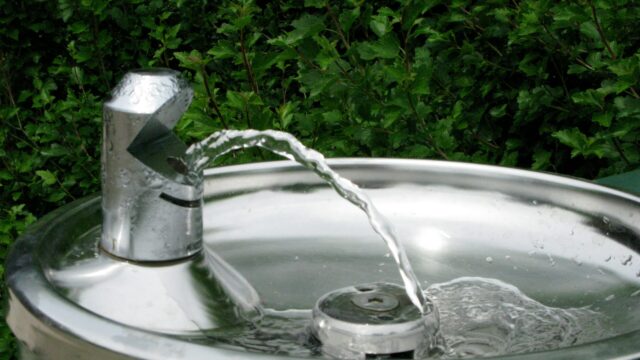Frontline Blog
New data: lead exposure disproportionately affects children in five major cities
May 2025
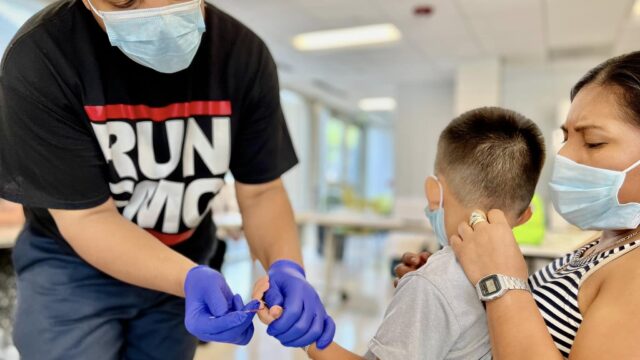
Children living in cities with the highest poverty rates and oldest homes have a prevalence of elevated blood lead four times that of children living in other cities.
This was the most striking finding in an analysis conducted by the Dornsife School of Public Health, Urban Health Collaborative using data from childhood lead poisoning programs in the largest U.S. cities.
In total in 2022, more than 12,000 children living in big cities had elevated blood lead levels (≥5 micrograms per deciliter, the CDC’s blood lead reference value during 2012-2021[i]).
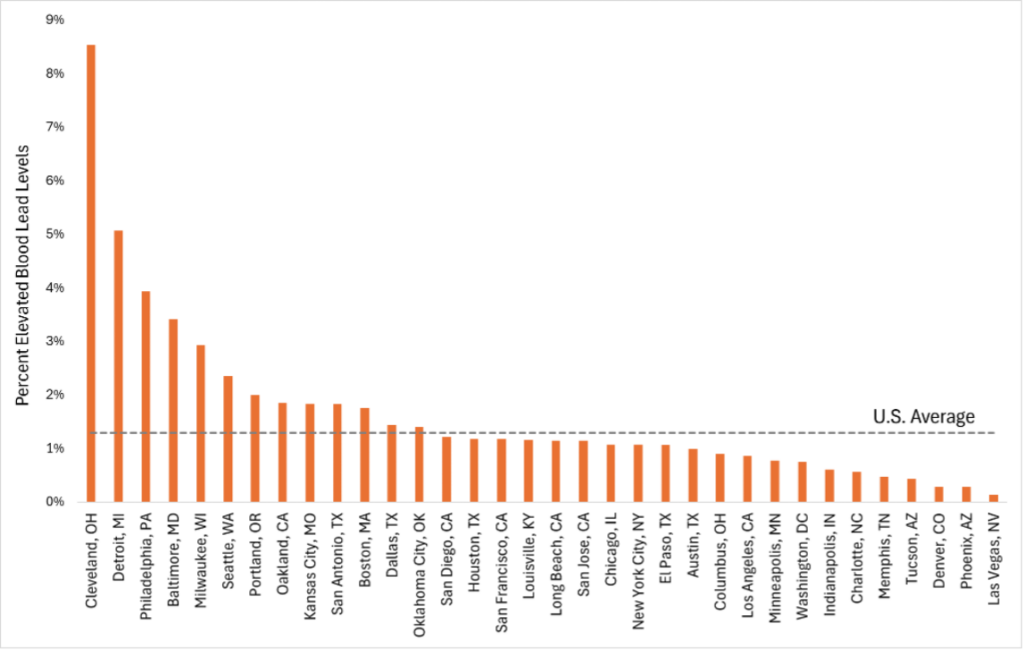
Elevated blood lead levels were particularly high in Cleveland, Detroit, Philadelphia, Baltimore, and Milwaukee. In these five cities, one in 25 children tested had elevated levels, compared to one in 100 children in other BCHC cities.
In two cities – Cleveland and Detroit – the percent of elevated blood lead was higher than 5%, which was the prevalence found in 2015 during Flint, Michigan’s, water crisis.
Compared to other BCHC cities, these five cities also had higher proportions of older housing, families living in poverty, racial segregation, and African-American residents impacted by structural racism.
Lead in blood has been linked to numerous pediatric health problems with cognitive function, motor skills, attention and behavior, and lower IQ. There is no safe blood lead level for children.
Reduction of childhood lead levels is a public health success. Forty years ago, nearly all children under the age of 6 had elevated levels of lead in their blood; now, approximately one percent have elevated levels. This outstanding success resulted primarily from federal action in the 1970s that discontinued the use of lead in gasoline and residential paint.
Nevertheless, lead-based paint remains the most common source of childhood lead poisoning and is present in millions of older homes. Deteriorated lead-based paint is more likely found in older homes and other buildings in lower-income areas.[ii] Young children are at high risk for poisoning due to frequent hand-to-mouth activities and their bodies absorb lead at faster rates than adults. Children with insufficient micronutrient intake — more prevalent in poorer cities — are at even higher risk.
The Big Cities Health Inventory data platform is supported by the Centers for Disease Control and Prevention of the U.S. Department of Health and Human Services (HHS) as part of a financial assistance award totaling $500,000 with 100 percent funded by CDC/HHS. The contents are those of the author(s) and do not necessarily represent the official views of, nor an endorsement, by CDC/HHS, or the U.S. Government.
Notes
[i] For the purposes of this blog, percent of elevated blood lead refers to levels ≥5 micrograms per deciliter among ages <6 tested for lead which was the “blood lead reference value” (BLRV) during 2012-2021. The BLRV is the threshold CDC recommends programs use to trigger environmental inspection and remediation of a child’s environment. Dramatic improvements in childhood blood lead levels across the U.S., coupled with growing evidence of health risks of lead at lower levels have motivated CDC to continue to lower the childhood BLRV while acknowledging that changes in BLRV thresholds create challenges for surveillance. In 2021, the CDC lowered the BLRV from 5.0 micrograms per deciliter to 3.5 micrograms per deciliter. For this blog, we did not use the newer BLRV because less than 10 BCHC cities publicly report data at the newer BLRV. A few jurisdictions have concerns that their lab assays are not yet sensitive/accurate enough and welcome standardization of surveillance and assaying practices nationwide.
[ii] EPA states that lead-based paint is usually not a hazard if it is in good condition. However, lead-based paint should be removed from all surfaces that children can chew on or that get a lot of wear and tear thus potentially generating lead-contaminated dust (particularly windows/sills, doors/frames, stairs, railings/banisters, and porches).
